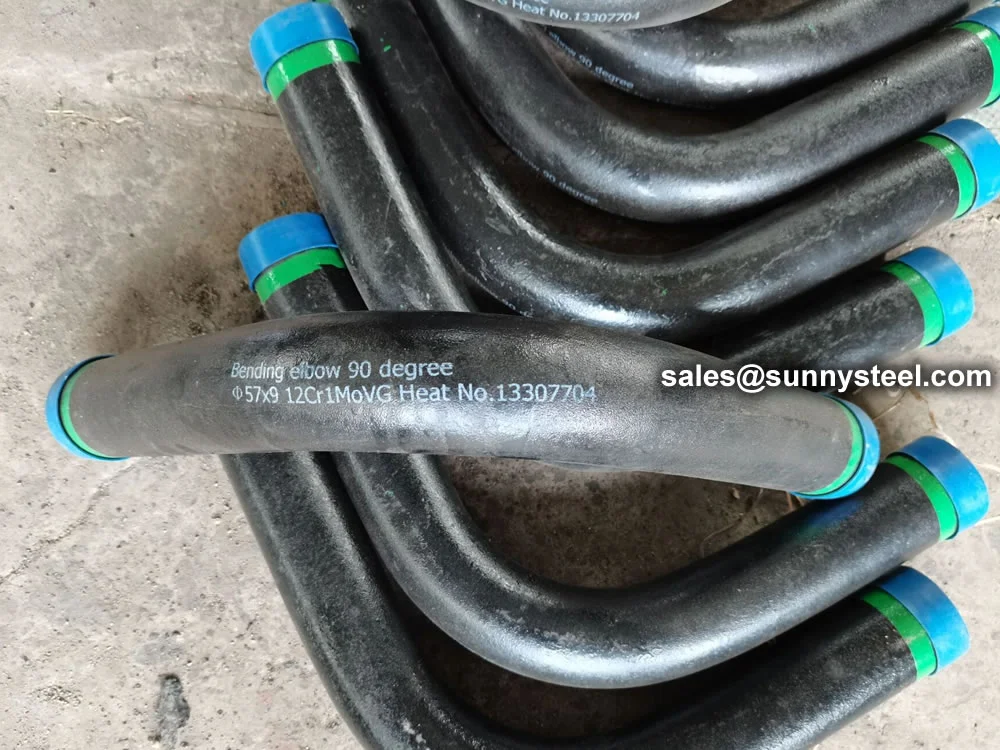
Seamless 12cr1movg Alloy Steel Pipe Bends For High-pressure Industrial Applications
12cr1movg pipe bending refers to the process of shaping 12cr1movg steel pipe into a curved form, often necessary for high-temperature and high-pressure applications like boiler tubes.
Seamless 12cr1movg Alloy Steel Pipe Bends For High-pressure Industrial Applications
12cr1movg pipe bending refers to the process of shaping 12cr1movg steel pipe into a curved form, often necessary for high-temperature and high-pressure applications like boiler tubes. 12cr1movg is a heat-resistant low-alloy steel containing chromium, molybdenum, and vanadium, which provides excellent strength and corrosion resistance at elevated temperatures.
12Cr1MoVG Pipe Bending involves shaping seamless alloy steel pipes into bends (e.g., 3D, 5D, 7D, or 180° U-bends) for high-pressure, high-temperature applications. 12Cr1MoVG, a low-alloy chromium-molybdenum steel, contains approximately 0.08–0.15% carbon, 0.9–1.2% chromium, 0.25–0.35% molybdenum, and vanadium, offering excellent high-temperature strength (up to 580°C), creep resistance, and corrosion resistance. Compliant with GB5310 standards, these bends are ideal for boiler pipeline protection in power generation, petrochemical, and chemical processing industries.
Manufactured through hot induction bending or cold drawing with heat treatment (normalized and tempered), 12Cr1MoVG pipe bends are available in sizes from 6mm to 219mm (outer diameter) with wall thicknesses from 0.6mm to 22mm, and bend radii of 3D, 5D, 7D, or custom. They exhibit tensile strength (≥470 MPa), yield strength (≥255 MPa), elongation (≥21%), and hardness (≤190 HB), ensuring durability in demanding environments.
12Cr1MoVG pipe bends support welding, though thick-walled pipes (≥16mm) require preheating and post-weld heat treatment to prevent cracking. Rigorous testing, including chemical analysis, tensile testing, flattening tests (no cracks at H=0.7D), and nondestructive methods (radiographic, ultrasonic), ensures quality. The chromium and vanadium content forms a protective oxide layer, enhancing corrosion resistance, while coatings like FBE or passivation further protect against rust and chemical exposure.
With a density of approximately 7.85 g/cm³ and thermal conductivity of ~45 W/(m·K) at 20°C, 12Cr1MoVG pipe bends are lightweight yet robust, ideal for high-pressure boilers (pressure ≥9.8 MPa, temperature 450°C–580°C), superheaters, reheaters, and heat exchangers. Their smooth interior surfaces reduce flow resistance, making them suitable for boiler pipeline protection, refinery piping, cooling coils, and structural applications like handrails and frames.
For engineers seeking reliable high-temperature piping solutions, 12Cr1MoVG pipe bends offer exceptional strength, erosion resistance, and longevity, addressing challenges like pipeline corrosion and thermal stress in industrial settings.
12Cr1MoVG Pipe Bending involves shaping seamless alloy steel pipes into bends (e.g., 3D, 5D, 7D, or 180° U-bends) for high-pressure, high-temperature applications. 12Cr1MoVG, a low-alloy chromium-molybdenum steel, contains approximately 0.08–0.15% carbon, 0.9–1.2% chromium, 0.25–0.35% molybdenum, and vanadium, offering excellent high-temperature strength (up to 580°C), creep resistance, and corrosion resistance. Compliant with GB5310 standards, these bends are ideal for boiler pipeline protection in power generation, petrochemical, and chemical processing industries.
Manufactured through hot induction bending or cold drawing with heat treatment (normalized and tempered), 12Cr1MoVG pipe bends are available in sizes from 6mm to 219mm (outer diameter) with wall thicknesses from 0.6mm to 22mm, and bend radii of 3D, 5D, 7D, or custom. They exhibit tensile strength (≥470 MPa), yield strength (≥255 MPa), elongation (≥21%), and hardness (≤190 HB), ensuring durability in demanding environments.
12Cr1MoVG pipe bends support welding, though thick-walled pipes (≥16mm) require preheating and post-weld heat treatment to prevent cracking. Rigorous testing, including chemical analysis, tensile testing, flattening tests (no cracks at H=0.7D), and nondestructive methods (radiographic, ultrasonic), ensures quality. The chromium and vanadium content forms a protective oxide layer, enhancing corrosion resistance, while coatings like FBE or passivation further protect against rust and chemical exposure.
With a density of approximately 7.85 g/cm³ and thermal conductivity of ~45 W/(m·K) at 20°C, 12Cr1MoVG pipe bends are lightweight yet robust, ideal for high-pressure boilers (pressure ≥9.8 MPa, temperature 450°C–580°C), superheaters, reheaters, and heat exchangers. Their smooth interior surfaces reduce flow resistance, making them suitable for boiler pipeline protection, refinery piping, cooling coils, and structural applications like handrails and frames.
For engineers seeking reliable high-temperature piping solutions, 12Cr1MoVG pipe bends offer exceptional strength, erosion resistance, and longevity, addressing challenges like pipeline corrosion and thermal stress in industrial settings.
| Specification | Details |
|---|---|
| Standards | GB5310, GB9948 |
| Material | 12Cr1MoVG (Cr-Mo-V Alloy Steel) |
| Sizes | 6mm to 219mm (Outer Diameter) |
| Wall Thickness | 0.6mm to 22mm |
| Bend Radius | 3D, 5D, 7D, or Custom |
| Angles | 90°, 45°, 30°, 180° (U-Bends), or Custom |
| Manufacturing | Hot Induction Bending, Cold Drawing, Heat Treatment |
| Heat Treatment | Normalized and Tempered |
| Coatings | FBE, Passivation |
| Testing | Chemical Analysis, Tensile (≥470 MPa), Flattening (H=0.7D), Radiographic, Ultrasonic |
| Mechanical Properties | Tensile: ≥470 MPa, Yield: ≥255 MPa, Elongation: ≥21%, Hardness: ≤190 HB |
| Operating Conditions | Pressure: ≥9.8 MPa, Temperature: 450°C–580°C |
Chromium and vanadium oxide layer with FBE coatings protects against rust and chemicals.
Smooth bends minimize turbulence and wear in high-flow systems.
Reliable at 450°C–580°C for boiler applications.
Enhanced by vanadium for long-term durability.
Efficient for high-pressure boiler and petrochemical systems.
Larger radii reduce pressure loss in high-flow systems.
| Feature | 12Cr1MoVG Alloy Steel | Carbon Steel (A106 Gr.B) | Stainless Steel (A312 TP316L) | ASTM A213 T91 |
|---|---|---|---|---|
| Temperature Range | 450°C–580°C | Up to 425°C | Up to 870°C | 450°C–600°C |
| Tensile Strength | ≥470 MPa | ≥415 MPa | ≥485 MPa | ≥585 MPa |
| Corrosion Resistance | High (Cr, V oxide layer) | Moderate (with coatings) | Excellent (passivation) | High (Cr oxide film) |
| Creep Resistance | Good (V content) | Poor | Moderate | Excellent (V, Nb) |
| Applications | Boilers, petrochemical | General piping, refineries | Marine, chemical processing | USC boilers, petrochemical |
| Weldability | Good (care for thick walls) | Good | Excellent | Complex (requires preheating) |
| Key Advantage | Balanced strength and corrosion resistance | Cost-effective | Superior corrosion resistance | Creep and high-temperature strength |
A curated list of long-tail keywords for 12Cr1MoVG pipe bends, covering diverse bending applications, specifications, and material properties.
Note: 12Cr1MoVG pipe bends are engineered for high-temperature, corrosion-resistant piping in critical industrial applications. Contact a certified supplier for detailed specifications.

| Element | Composition (%) |
|---|---|
| Carbon (C) | 0.08-0.15 |
| Silicon (Si) | 0.17-0.37 |
| Manganese (Mn) | 0.40-0.70 |
| Phosphorus (P) | ≤0.030 |
| Sulfur (S) | ≤0.030 |
| Chromium (Cr) | 0.90-1.20 |
| Molybdenum (Mo) | 0.25-0.35 |
| Vanadium (V) | 0.15-0.30 |
| Property | Value |
|---|---|
| Tensile Strength, min (MPa) | 490 |
| Yield Strength, min (MPa) | 245 |
| Elongation, min (%) | 22 |
| Hardness, max (HBW) | 235 |
Radius is three times the nominal diameter. Compact design for space-limited applications.
Radius is five times the nominal diameter. Optimal balance of flow and space requirements.
Radius is ten times the nominal diameter. Maximum flow efficiency with minimal pressure drop.
For a 10-inch diameter pipe with a 5D bend:
Centerline Radius = 5 × 10 inches = 50 inches
The radius calculation helps determine the space requirements and flow characteristics of the bend.
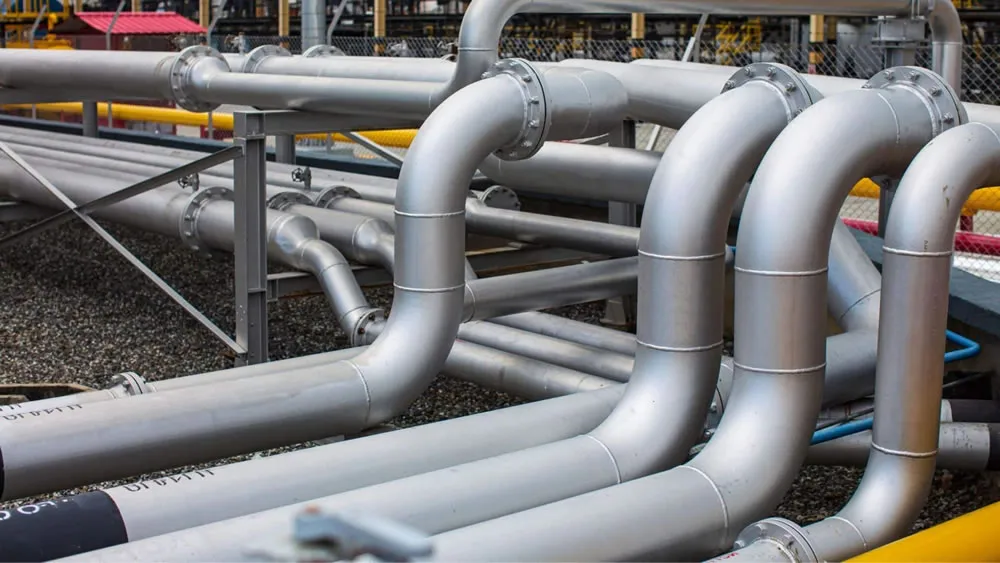
The 12Cr1MoVG Pipe Bending are used in the following industries:
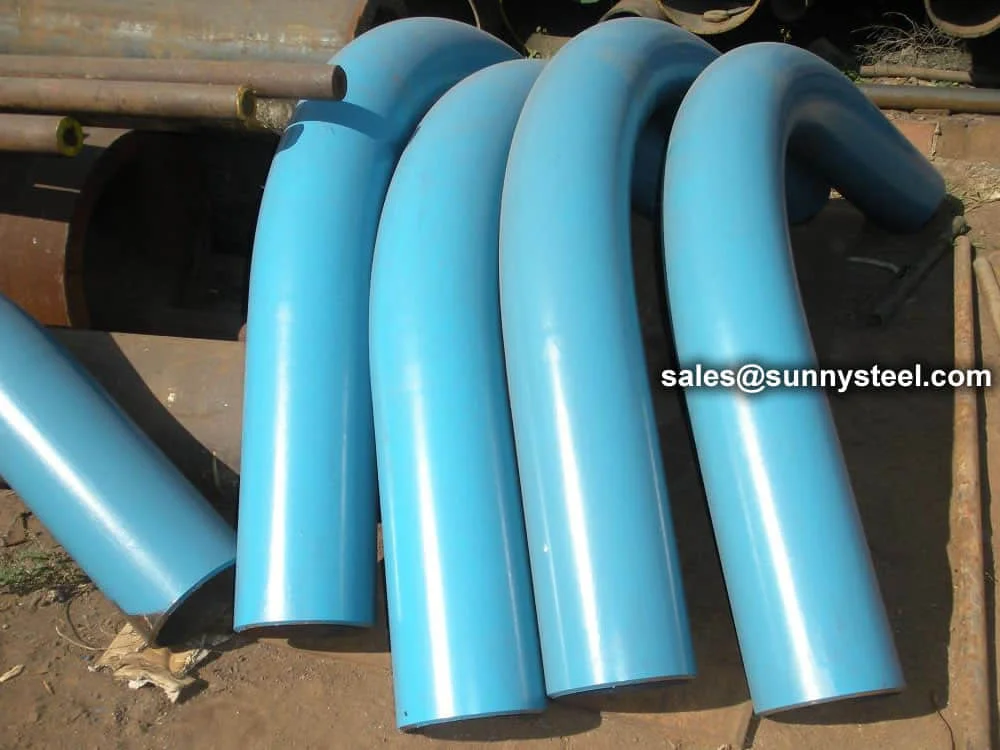
A 7d pipe bending is a pipe bend that the bend rad...
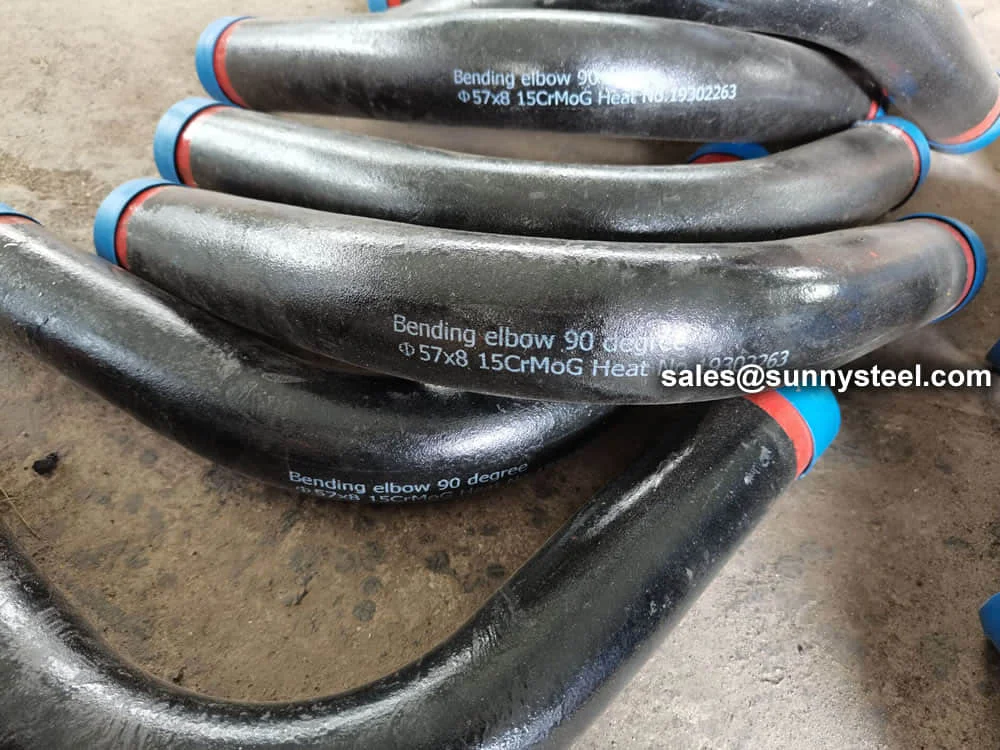
15crmog pipe bending involves shaping seamless all...
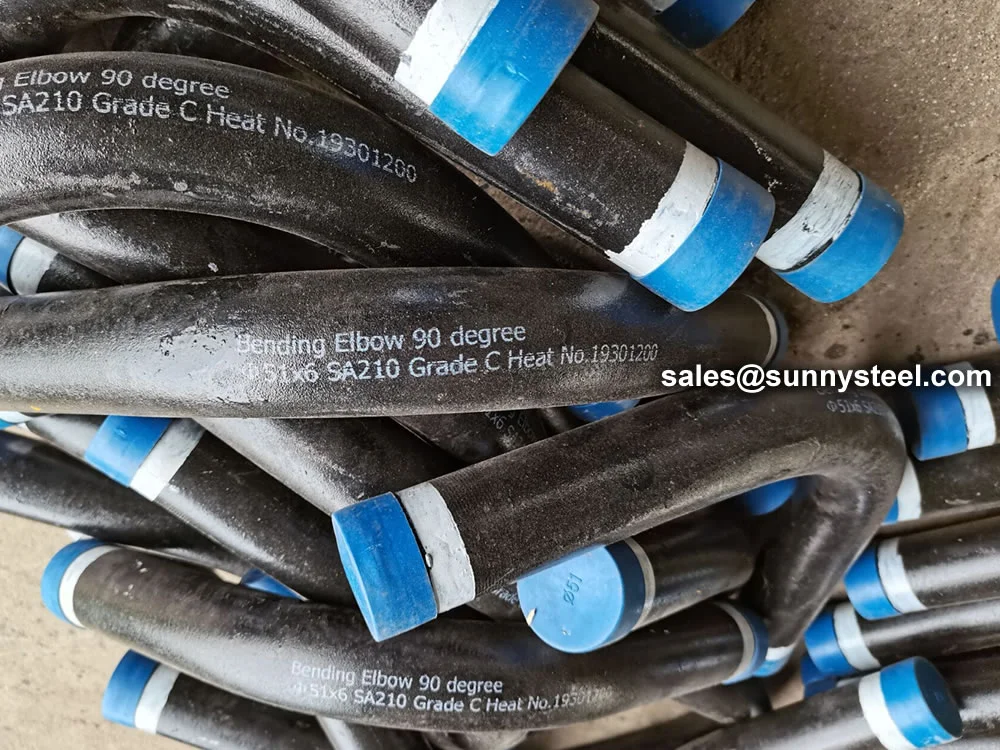
Astm a210 grade c pipe bending involves forming se...
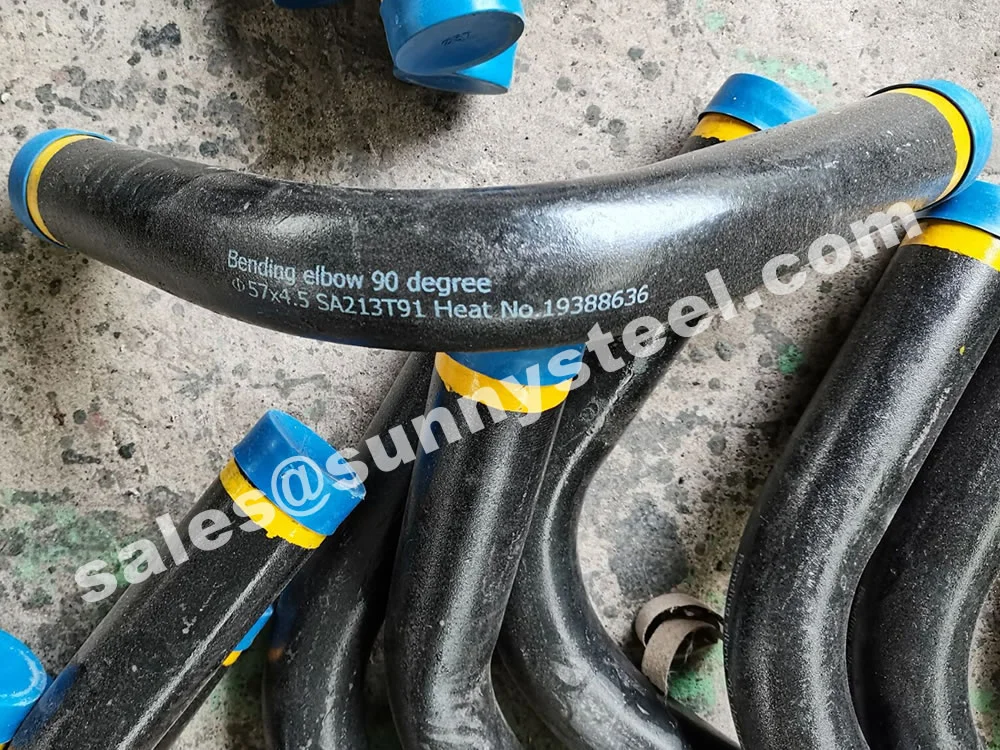
Bending astm a213 t91 requires special care and te...
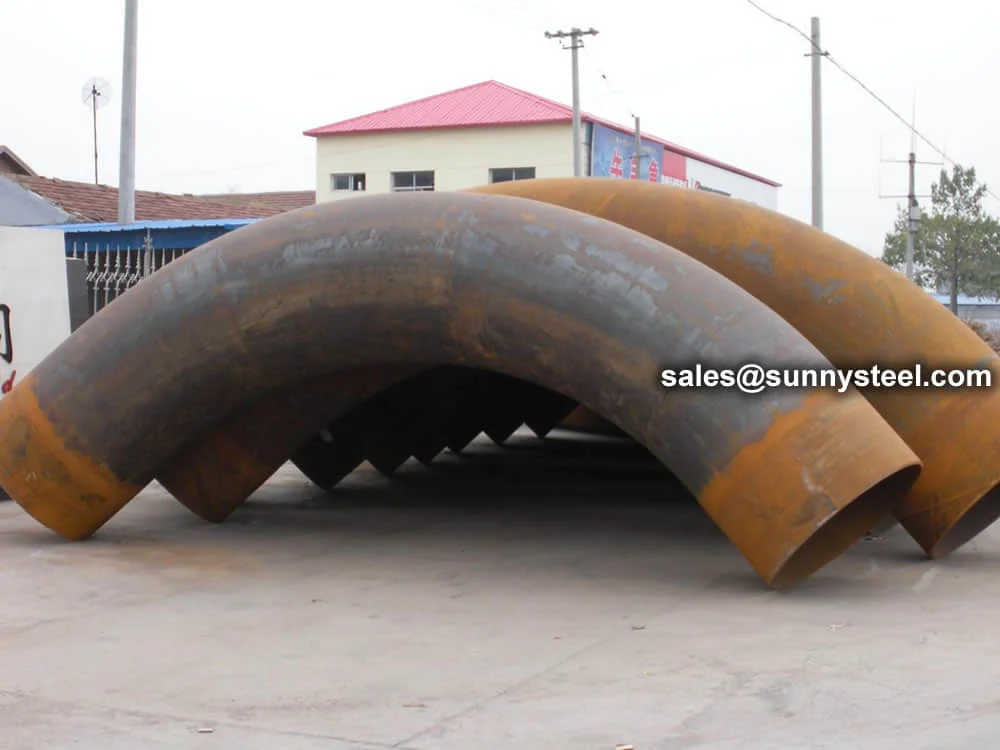
Large size pipe bending refers to the technique of...
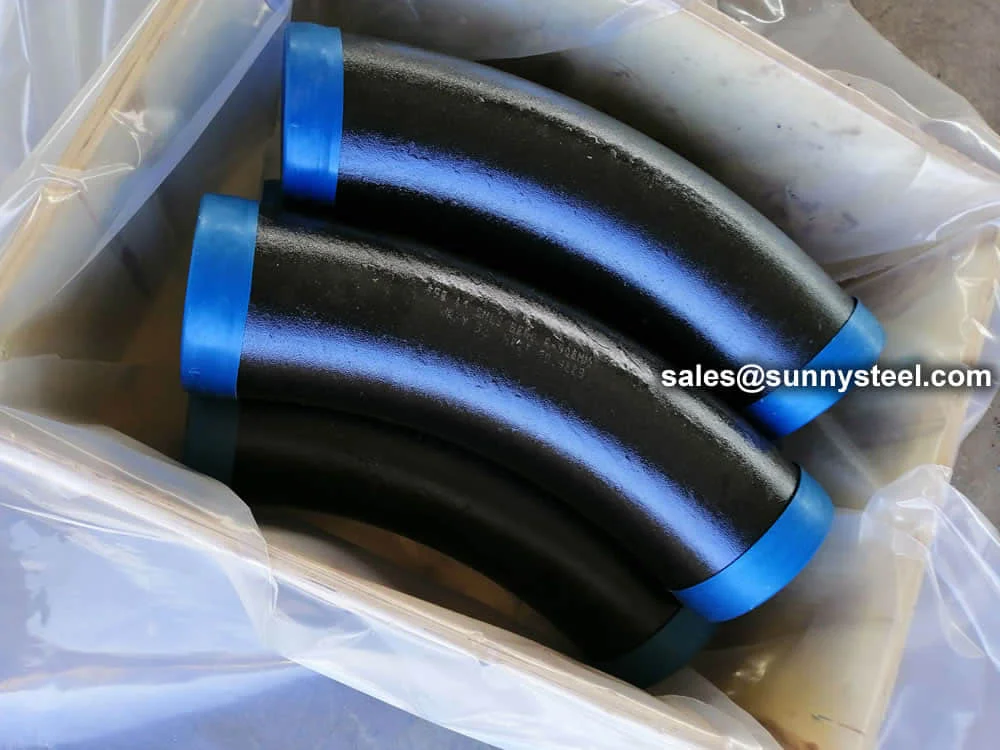
5d pipe bending solutions, crafted from carbon and...